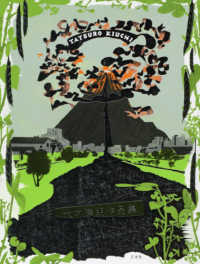Full Description
In recent years the music of minimalist composers such as La Monte Young, Terry Riley, Steve Reich and Philip Glass has, increasingly, become the subject of important musicological reflection, research and debate. Scholars have also been turning their attention to the work of lesser-known contemporaries such as Phill Niblock and Eliane Radigue, or to second and third generation minimalists such as John Adams, Louis Andriessen, Michael Nyman and William Duckworth, whose range of styles may undermine any sense of shared aesthetic approach but whose output is still to a large extent informed by the innovative work of their minimalist predecessors. Attempts have also been made by a number of academics to contextualise the work of composers who have moved in parallel with these developments while remaining resolutely outside its immediate environment, including such diverse figures as Karel Goeyvaerts, Robert Ashley, Arvo Pärt and Brian Eno. Theory has reflected practice in many respects, with the multimedia works of Reich and Glass encouraging interdisciplinary approaches, associations and interconnections. Minimalism's role in culture and society has also become the subject of recent interest and debate, complementing existing scholarship, which addressed the subject from the perspective of historiography, analysis, aesthetics and philosophy. The Ashgate Research Companion to Minimalist and Postminimalist Music provides an authoritative overview of established research in this area, while also offering new and innovative approaches to the subject.
Contents
Contents: Foreword; Introduction: experimental, minimalist, postminimalist? Origins, definitions, communities, Kyle Gann, Keith Potter and Pwyll ap SiÃ'n; Part I Historical and Regional Perspectives: Mapping early minimalism, Keith Potter; A technically definable stream of postminimalism, its characteristics and its meaning, Kyle Gann; European minimalism and the modernist problem, Maarten Beirens; Systems and other minimalism in Britain, Virginia Anderson. Part II Minimalism and the Theatre: Minimalism in the time-based arts: dance, film and video, Dean Suzuki; From minimalist music to postopera: repetition, representation and (post)modernity in the operas of Philip Glass and Louis Andriessen, Jelena Novak; Accommodating the threat of the machine: the act of repetition in live performance, Jeremy Peyton Jones. Part III Minimalism and Other Media: Minimalism, technology and electronic music, Richard Glover; Minimalist and postminimalist music in multimedia: from the avant-garde to the blockbuster film, Rebecca M. Doran Eaton; Going with the flow: minimalism as cultural practice in the USA since 1945, Robert Fink; Disaffected sounds, temporalized visions: Philip Glass and the audiovisual impulse in postminimalist music, John Richardson and Susanna Välimäki. Part IV Analytical and Philosophical Perspectives: Analysing minimalist and postminimalist music: an overview of methodologies, Tristian Evans; Reference and quotation in minimalist and postminimalist music, Pwyll ap SiÃ'n; Minimalism and narrativity: some stories by Steve Reich, John Pymm; A theoretical model of postminimalism and two brief 'case studies', Marija Masnikosa. Part V Minimalism and Beyond: Defining 'spiritual minimalism' David Dies; Minimalism and pop: influence, reaction, consequences, Jonathan W. Bernard; Musical minimalism in Serbia: emergence, beginnings and its creative endeavours, Dragana Stojanovic-Novicic. Part VI Issues of Performance: Clapping Music: a performer's perspective,







